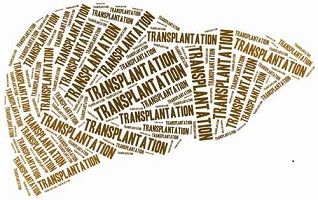Article
Weighing Liver Transplants for Polycystic Patients
Author(s):
One cure for polycystic liver disease is a liver transplant-but since the disease is not fatal (the liver continues to do its job despite the problems the condition causes for patients), physicians face a treatment dilemma. A Belgian team offers an objective way to make the decision.

Having polycystic liver disease can make patients miserable. Their livers can grow to 10 times normal size, causing their abdomens to distend, wreaking havoc with digestion and causing serious events like hemorrhage.
One cure is a liver transplant—but since the disease is not fatal and the liver continues to do its job despite the problems the condition causes for patients, physicians face a treatment dilemma.
Do they subject patients to a potentially life-threatening surgery that comes with a need to take immunosuppressive drugs, or just help patients manage symptoms?
Reporting at the International Liver Congress in Vienna, a Belgian team said it had come up with a predictive model to determine the need for transplantation in these patients
“Massive hepatomegaly can become an indication for liver transplant,” said Frederick Temmerman, MD, of the department of hepatology at University Hospital, KU Leuven, Leuven, Belgium.
The team did a retrospective cohort analysis of polycystic liver disease (PCLD) patients at 5 European tertiary care centers. “Transplant for these patients is not uncommon in Europe,” Temmerman said this afternoon at session at the conference.
The researchers looked at clinical and abdominal scan data, re-analyzing them for liver volume, stage of malnutrition, and whether there were extra-hepatic or local cyst complications.
There were 216 patients in the study, 87% of them women. In addition 83% had AKPD and 36% had malnutrition.
Of the group, 137 patients had been deemed eligible for a liver transplant by their transplant teams and 50 received a combine liver and kidney transplant. The factors that were predictive of the need for a transplant were a liver that had grown to 5 times or more normal size, serum albumin of less than 4.1 g/l, being under age 47, and the presence of ascites.
In the patients who had both liver and kidney transplants, a creatinine clearance of less than 32 ml/1.73m correctly classified 92% of the patients who needed kidney transplant.
Temmerman and colleagues concluded that “In patients with PLCD, factors which can be assessed only by one scan (liver volume, nutritional stage, ascites) provide objective information that could be used for the decision and prioritization for liver transplant.”
Though the disease has “mechanical complaints” related to the burdensome size of the liver, not all patients should be subjected to the surgery, Temmerman said. “We developed the score to standardize the complaints and determine the severity of the disease.”




